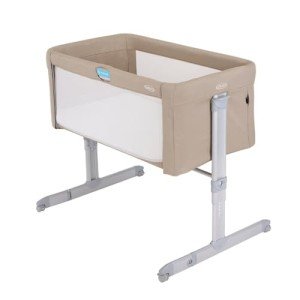The Benefits and Considerations of Bedside Cots for Co-Sleeping
Co-sleeping has emerged as a popular choice for many new parents who seek to maintain close proximity to their infants during the night. In addition to traditional co-sleeping practices, bedside cots are getting traction as an alternative that uses both the comfort of nearness and the safety of separate sleeping spaces. This short article intends to check out the idea of bedside cots for co-sleeping, highlighting their benefits, potential drawbacks, suggestions for choice, and common concerns.
Comprehending Bedside Cots
Bedside cots, also known as side-sleepers or co-sleepers, are specifically created cribs that are affixed to the side of the parents' bed. They enable parents to preserve easy access to their infants during the night while offering a different sleeping area that can boost security and comfort.
Features of Bedside Cots
- Size and Design: Bedside cots are often smaller than basic cribs however still supply sufficient room for an infant. The majority of models have adjustable heights to match the bed.
- Side Panels: Many designs feature detachable or mesh side panels that permit safe visual monitoring of the baby, improving parents' capability to react to their baby's needs rapidly.
- Stability and Safety: Bedside cots are developed with stability in mind, including safety anchors or straps that protect the cot to the moms and dad's bed.
- Alleviate of Access: Parents can easily reach over to comfort or feed their baby without having to rise, helping with nighttime breastfeeding or soothing.
Benefits of Using Bedside Cots for Co-Sleeping
- Enhanced Bonding: Proximity to the baby promotes psychological connection and bonding, which is crucial throughout the early stages of development.
- Easier Nighttime Care: Nighttime feeding and comforting become considerably simpler with a bedside cot, as parents can simply lean over to attend to their baby's requirements.
- Increased Safety: Bedside cots lower the risk of suffocation or unintentional rolls that can occur with standard co-sleeping directly in the adult bed.
- Private Sleep Space: The paperwork supports that having their own sleeping space can assist infants sleep much better in regards to fewer disruptions from parents.
- Transitioning: A bedside cot can be a useful transitional tool as babies grow and begin to transfer to their own rooms.
| Function | Benefits |
|---|---|
| Boosted Bonding | Closer physical presence |
| Easier Access | Quick action to needs |
| Increased Safety | Minimized threat of accidents |
| Private Space | Less disturbance in the evening |
| Simplified Transition | Easier transfer to independent sleeping |
Considerations Before Choosing a Bedside Cot
While bedside cots use many benefits, possible users need to consider the following elements:
- Size of Bed: Ensure that the cot fits nearby to the bed without triggering discomfort or overcrowding.
- Budget plan: Prices can vary considerably amongst different brand names and designs, so consider budget plan restraints thoroughly.
- Safety Standards: Check that the cot satisfies all security regulations to ensure it is free from dangerous materials and includes needed security features.
- Product: Non-toxic finishes and materials are most importantly crucial for infant health.
- Infant's Age and Weight: Some cots have weight limits, and parents need to choose accordingly based upon their baby's development.
Tips for Selecting a Bedside Cot
- Check out Reviews: Look for user feedback and security ratings.
- Look for Certifications: Ensure the cot abides by safety standards.
- Check the Design: Choose a design that matches your bedroom design while ensuring performance.
- Think about Accessibility: Look for designs that enable easy reach however reduce the threat of rolling out.
- Test Stability: Ensure that the cot is stable and safe when connected to the bed.
Typical FAQs About Bedside Cots for Co-Sleeping
Q1: Are bedside cots safe for co-sleeping?
A1: When utilized correctly, bedside cots are designed to supply a safe sleeping choice for infants while making it possible for close proximity to parents. Constantly guarantee to secure the cot correctly to avoid motions that could result in mishaps.
Q2: At what age can I begin using a bedside cot? Bedside Cot That Attaches To Bed : Many parents start using bedside cots right after the baby is born. However, it is important to speak with a health care supplier concerning your infant's readiness for co-sleeping, specifically if they were born too soon. Q3: Can I use a routine
crib for co-sleeping? A3: While routine cribs can be utilized, they do not provide the very same level of availability and security as bedside cots, making bedside choices more beneficial for co-sleeping. Q4: What if my baby rolls over?A4: Most bedside cots are designed with safety functions that reduce risks if a baby rolls. Additionally,
they are typically low enough that a roll would not result in a significant drop. Q5: How do I transition my baby from a bedside cot to a routine crib?A5: Gradually move your baby to a separate crib in their own room after they end up being accustomed to oversleeping the bedside cot. Start with naps in the crib while preserving nighttime co-sleeping till they adapt. Bedside cots provide a practical and more secure option to direct co-sleeping, providing numerous advantages in regards to convenience and safety. They facilitate bonding
in between infants and parents while lessening the threats associated with conventional co-sleeping practices. Parents searching for a method to keep their babies close at night should consider the advantages that bedside cots can offer. With a mindful examination of alternatives available, parents can produce a safe and comfortable sleep environment that supports their household's distinct requirements.

